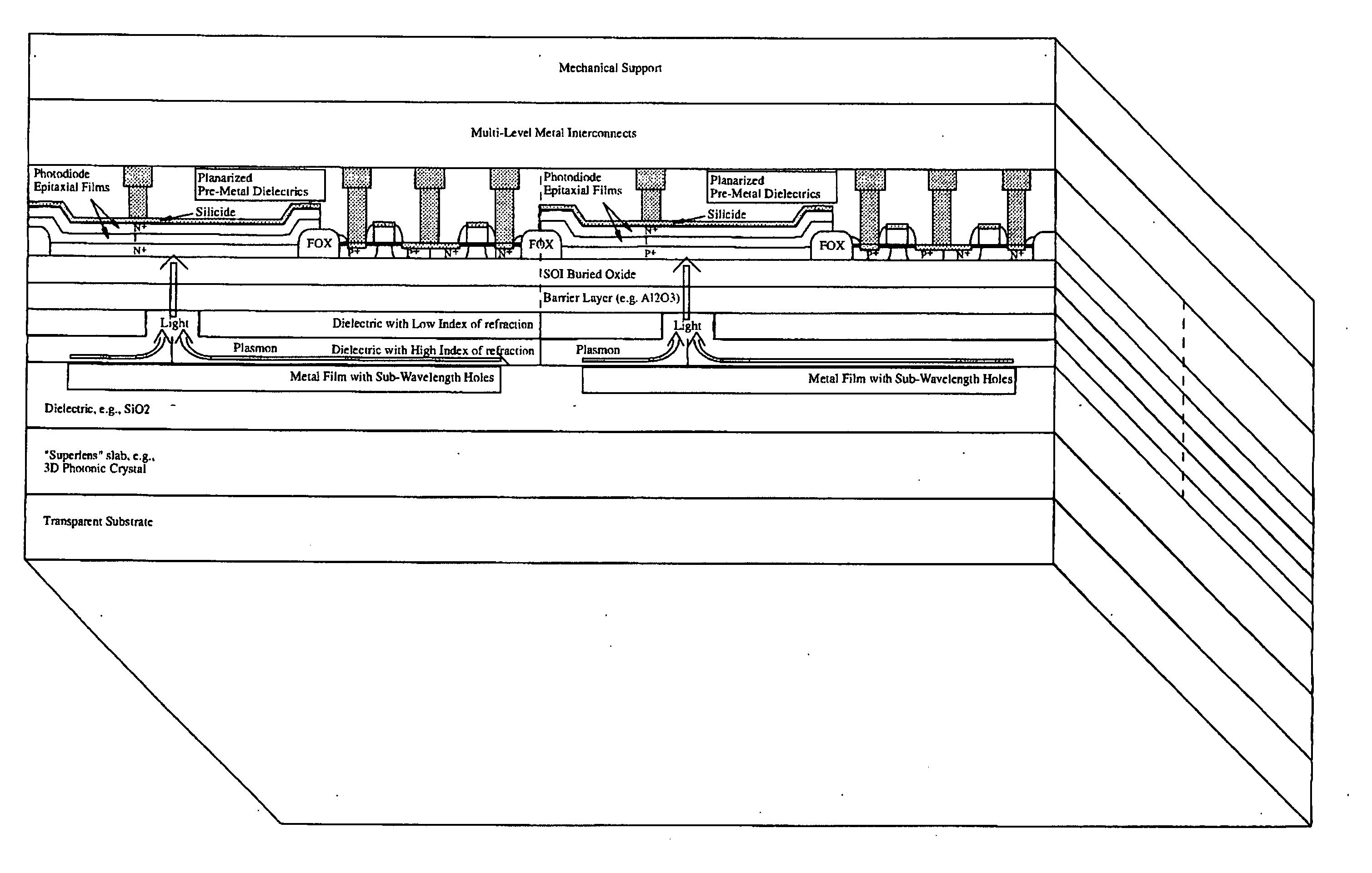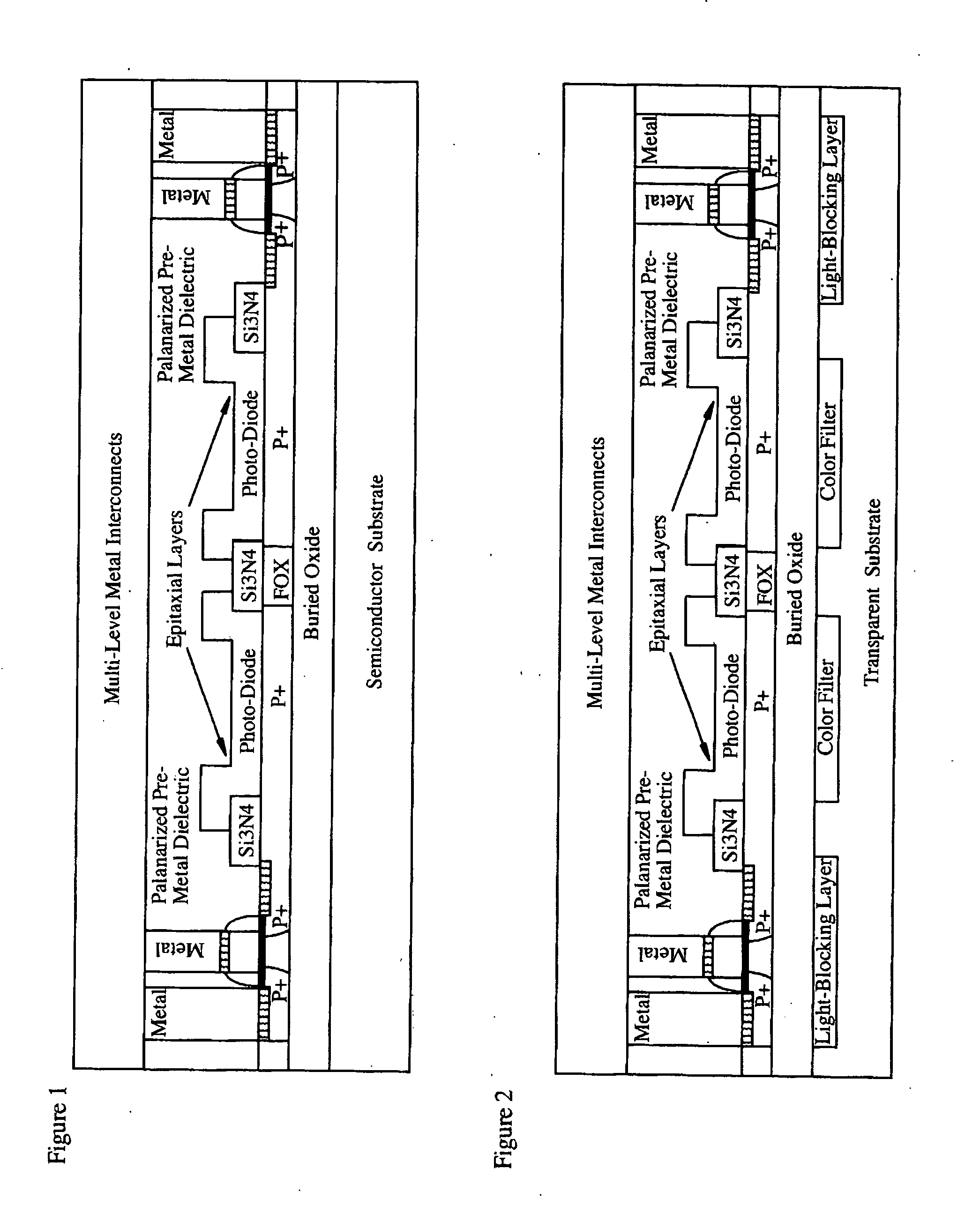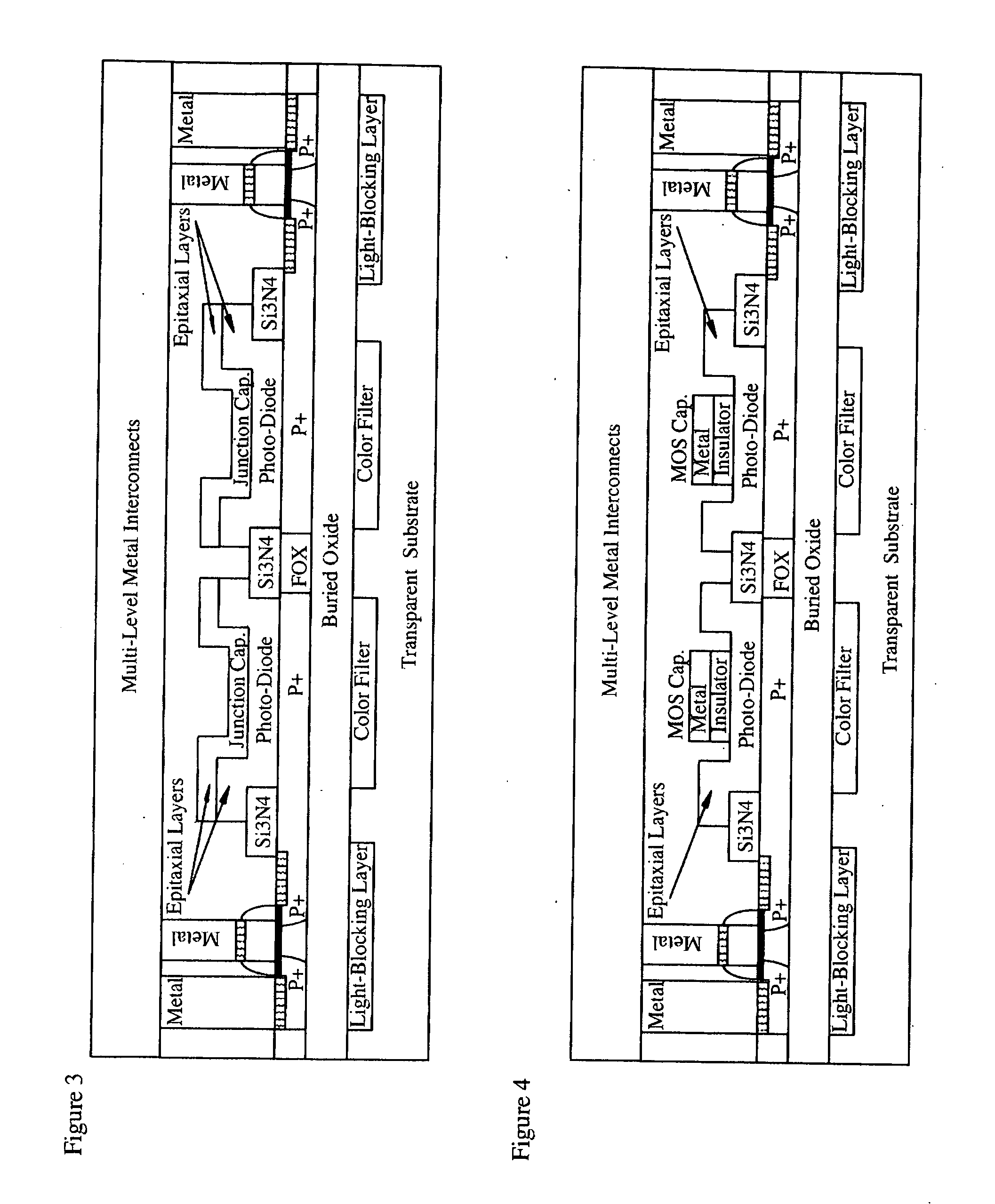CMOS image sensor
a technology of image sensor and optical field, applied in the field of optical to electronic conversion, can solve the problems of high recombination rate, short lifetime of electron-hole pair, and inability to efficiently absorb visible wavelengths
- Summary
- Abstract
- Description
- Claims
- Application Information
AI Technical Summary
Benefits of technology
Problems solved by technology
Method used
Image
Examples
Embodiment Construction
[0038] Back-Side Illuminated TF-SOI CMOS Image Sensors
[0039] The innovations disclosed in WO 02 / 033755 and co-pending application PCT / EP / 03 / 10346, which are incorporated herein by way of reference, can be combined to generate a completely new kind of CMOS Imager Sensor (CIS) in which SAM-APDs are made on TF-SOI or TF-GeOI. FIG. 1 shows a schematic representation of a fully processed TF-SOI wafer, in which the CMOS devices, the photo-diode layer, and the complete metallization stack have been made.
[0040] In SOI and GeOI substrates, the wafer under the buried oxide is used only as a mechanical support for the buried oxide and top crystalline semiconductor (Si or Ge) films, and it has very little impact on the properties of the CMOS devices to be fabricated on the top crystalline semiconductor film. For this reason the wafer bulk under the buried oxide can easily be replaced by a different mechanical substrate that is transparent to light in wavelengths of interest, such as the UV, V...
PUM
 Login to View More
Login to View More Abstract
Description
Claims
Application Information
 Login to View More
Login to View More - R&D
- Intellectual Property
- Life Sciences
- Materials
- Tech Scout
- Unparalleled Data Quality
- Higher Quality Content
- 60% Fewer Hallucinations
Browse by: Latest US Patents, China's latest patents, Technical Efficacy Thesaurus, Application Domain, Technology Topic, Popular Technical Reports.
© 2025 PatSnap. All rights reserved.Legal|Privacy policy|Modern Slavery Act Transparency Statement|Sitemap|About US| Contact US: help@patsnap.com



